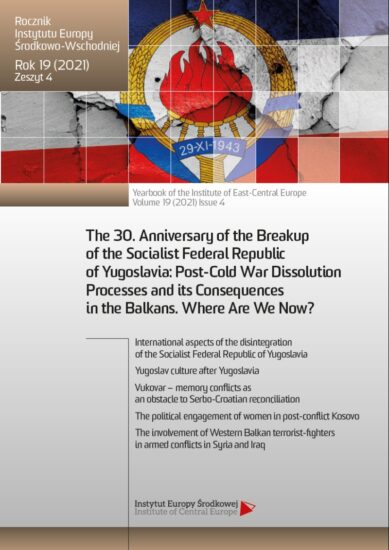Thirty years of relations between the Republic of Turkey and the Republic of Serbia: Changing political and international dynamics
Thirty years of relations between the Republic of Turkey and the Republic of Serbia: Changing political and international dynamics
Author(s): Karol BieniekSubject(s): Political Theory, Diplomatic history, International relations/trade, Transformation Period (1990 - 2010), Cold-War History
Published by: Instytut Europy Środkowej
Keywords: Turkey; Serbia; Foreign Policy; The Balkans; Middle Power;
Summary/Abstract: Bilateral relations between the Republic of Turkey and the individual successor states of former Yugoslavia differ, after thirty years since its dissolution, in form and in substance. While just after the breakup of the Socialist Federal Republic of Yugoslavia Turkey managed to establish and sustain cordial ties with such countries as, for instance, Macedonia, Bosnia and Herzegovina, relations with Serbia (Serbia and Montenegro) remained tense and the two countries perceived themselves, in the best case, as traditional opponents. The basic aim of this paper is to analyse the bilateral relations of these two states and Turkish foreign policy towards Serbia, a country currently perceived as a ‘neighbour,’ despite the fact that they do not share common border. The paper argues that rapprochement of two countries, so clearly visible in several dimensions after 2002, marks a new phase in Turkey’s general foreign policy. The paper will trace the thirty-year evolution of bilateral contacts while arguing that the current positive relations have their source also in the domestic arena, both of Turkey and Serbia, which is willing to increase influence in the Western Balkans and strengthen its international position. Thus, the two states for the first time share similar foreign policy goals. The whole analysis is theoretically anchored in the behavioural approach of the ‘middle power‘ paradigm. An author-applied qualitative content analysis is the main research technique. The main sources are official documents, selected monographs, academic articles, and analytical reports.
Journal: Rocznik Instytutu Europy Środkowo-Wschodniej
- Issue Year: 19/2021
- Issue No: 4
- Page Range: 175-189
- Page Count: 15
- Language: English

